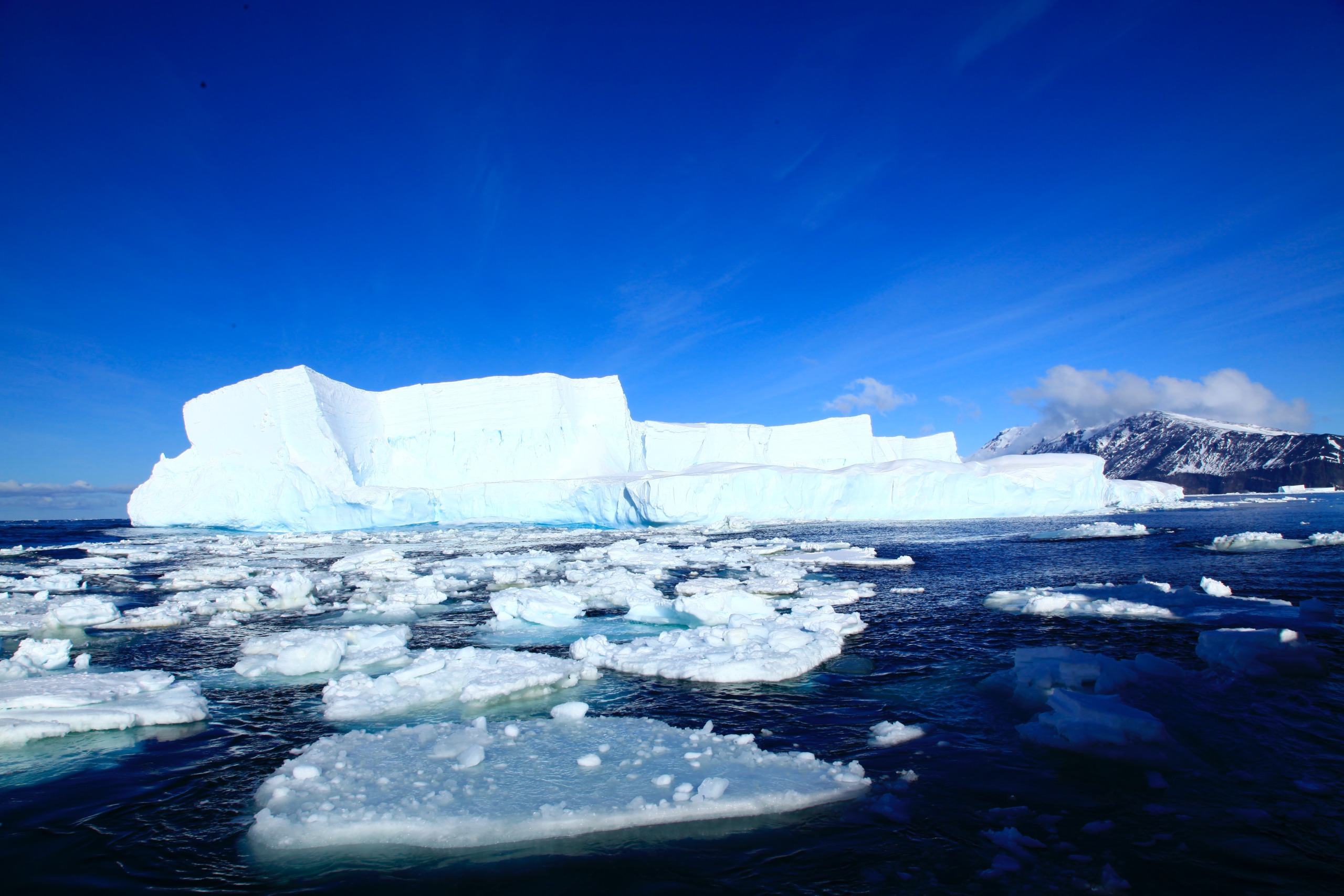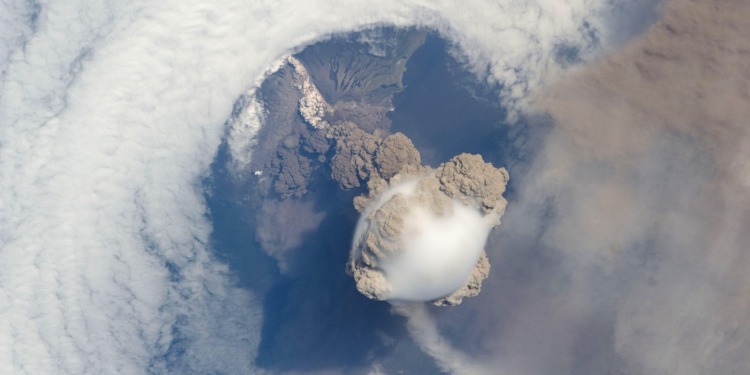There are roughly 1,500 potentially active volcanoes in the world. Volcanic eruptions are not rare: Each year, between 60 and 80 eruptions occur around the world. The USA, Japan, and Indonesia have the highest number of yearly eruptions.
Not all volcanic activities are the same. There can be hot ash release, lava flows, or gas emissions, among other things. But these activities can cause other correlated events, such as floods and wildfires.
The effects of volcanic eruptions on humans are devastating. They can cause suffocation, respiratory diseases, and skin irritation; they can contaminate water and food, as well as compromise transportation and buildings.
As several recent studies show, volcanic eruptions may be impacting the climate, and climate change could be influencing volcanic activity. Let’s see how.
How Do Volcanoes Affect the Climate?
One might expect volcanic emissions to increase global temperatures. In reality, however, the opposite may also be true.
“Volcanic eruptions are an important natural cause of climate change on many timescales,” writes Alan Robock, Climatologist and Distinguished Professor in the Department of Environmental Sciences at Rutgers University.
When volcanoes erupt, they release sulfur gasses in the stratosphere (the second layer of the Earth’s atmosphere), which can interfere with Earth’s radiative balance and chemical equilibrium. These gasses then convert to sulfur aerosols, which can have both heating and cooling effects on the climate.
As Dr. Anya Schmidt, Professor for Climate Modelling at LMU in Munich, explained: “These sulphate aerosol particles are very tiny and shiny and reflect some of the incoming sunlight back to space, which results in a temporary cooling effect at Earth’s surface.”
At the same time, the aerosol particles warm up the stratosphere by absorbing both solar and terrestrial radiation.
On June 15, 1991, the world witnessed the largest volcanic eruption of the 20th century. Mount Pinatubo, an active stratovolcano in the Zambales Mountains in the Philippines, injected a 20-million-ton (metric scale) sulfur dioxide cloud into the stratosphere. It was the biggest cloud observed since 1978, when satellite observation of volcanic activity began.
The eruption of Mount Pinatubo is believed to have caused the greatest aerosol disturbance of the stratosphere in the last century. It cooled Earth’s temperature for three years (by 1.3°C at its peak).
Dr. Santiago Arellano, researcher at the Chalmers Institute of Technology, stated that “[l]arge volcanic eruptions in the past have changed global climate directly and by reinforcing other processes.”
Among other gasses, volcanic eruptions also emit Carbon Dioxide (CO2), a greenhouse gas driving climate change. While scientists are still debating the extent to which past volcanic eruptions may have contributed to global warming, we know that annual CO2 emissions released by human activities are over 100 times higher than those of all the world’s yearly volcanic eruptions combined.
Moreover, the duration of these effects differs greatly. While the particles released when a volcano erupts usually dissipate within two years, the effects of human activity and the burning of fossil fuels remain over thousands of years.
Does Climate Change Impact Volcanic Activity?
The science is inconclusive about the overall, long-term effects of climate change on volcanic activity. However, several studies have investigated if and how changes in the climate — in some cases natural, in others human-driven — impact volcanic activity.
It is believed that climate change can impact volcanic activity in two ways: On one hand, a climate-related event can happen during a volcanic event, worsening the disaster; on the other hand, some of the effects of a changing climate might trigger the eruption directly.
Overall, three main phenomena have been studied in relation to volcanic activity: Ice melting, sea-level changes, and rainfall.
The Effect of Melting Ice on Volcanic Eruption Rates
During the mid-Holocene — around 5 thousand calibrated years before the present — Iceland witnessed a period of deglaciation. The rise in ice melting was associated with an increase in volcanic eruption rates.
Another study published by AGU and the Geochemical Society presented similar results: After the Icelandic ice cap melted, the eruption rates were found to be 100 times higher than before.
Related Articles: Iceland Volcano Eruption: Reykjavik Faces Nature’s Fiery Display | Is There More to Global Warming Than Human Activity?
A 2022 study that investigated the consequences of the Cordilleran Ice Sheet (CIS) retreat also highlighted the strong link between surface warming, ice sheet retreat, volcanism, marine productivity, and ocean deoxygenation.
“Timing of volcanic inputs relative to CIS retreat suggests that regional explosive volcanism was initiated by ice unloading,” wrote the researchers.
Therefore, one can conclude, based on these findings, that there appears to be a link between ice melting and volcanic activity.

Do Rising Sea Levels Influence Volcanic Activity?
More than half of subaerial volcanoes worldwide are either on coasts or islands. According to a 2021 study that examined former eruptions of the Greek island of Santorini, there is a “clear relationship between sea-level change and the timing of eruptions of an active, subaerial volcano.”
“Numerical modelling shows that when the sea level falls by 40 m below the present-day level, the induced tensile stresses in the roof of the magma chamber of Santorini trigger dyke injections. As the sea level continues to fall to −70 or −80 m, the induced tensile stress spreads throughout the roof so that some dykes reach the surface to feed eruptions. Similarly, the volcanic activity gradually disappears after the sea level rises above −40 m,” the researchers write.
Sea-level changes also seem to be associated with other aspects of volcanic activity, such as flank (in)stability, magma migration, and the eruptability of magma. All these factors have a detrimental impact on our lives.
Volcano slope instability is defined as “the condition within a volcanic edifice that destabilizes to a degree sufficient enough to increase the likelihood of structural failure of all or portions of the edifice.”
Slope instability might cause more rockfalls, flows, and avalanches. In areas with a high concentration of human activity, slope instability can impact land use and the probability of tsunamis.
Heavy Rainfall and Volcanic Activity
On Dec. 6, 2021, the eruption of one of Indonesia’s most active volcanoes, Mount Semeru, killed at least 39 people. The eruption was associated with ashfall, pyroclastic flows, and volcanic mudflows. This debris destroys everything in its path, covering it with mud and concrete.
In the period just before the eruption, the area had witnessed heavy rainfall. This led scientists to investigate the correlation between rainfall and volcanic activity for that specific event. They concluded that the heavy rain damaged the dome of lava in the volcanos’ summit crater, leading to its collapse. The pressure on the magma below reduced, triggering the eruption.
This was not the first time that rainfall was associated with volcanic activity. In fact, scientists believe that extreme rainfall — which is made more frequent and more severe by climate change — increases both the likelihood of eruptions and flank collapse, as well as plane weakening and hydrothermal alteration.
In conclusion, these studies provide us with evidence of a correlation between particular volcanic activities in the past (some of which happened before human activities started affecting the climate) and heavy rainfall, ice-melting, and rising sea levels — three phenomena that human activities have been making worse since the industrial revolution.
However, while the topic is still being studied, at the time of writing there seems to be no evidence that volcanic activity has been increasing (alongside global temperatures) since the 19th century.
Editor’s Note: The opinions expressed here by the authors are their own, not those of Impakter.com — In the Featured Photo: Sarychev volcano’s eruption, 2009. Featured Photo Credit: NASA.










